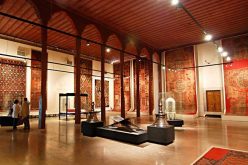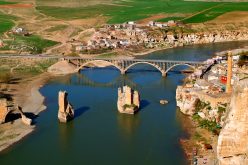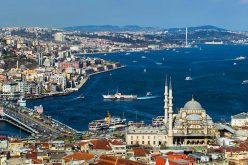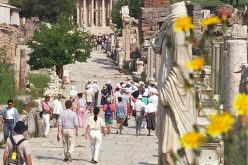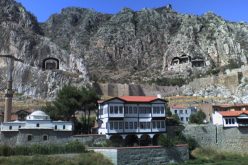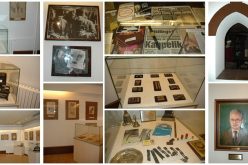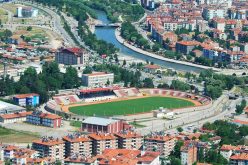Pergamon
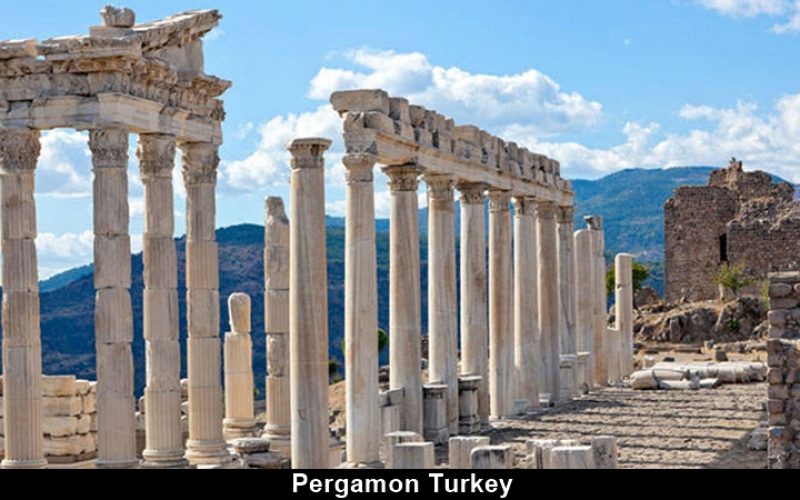
Pergamon
Pergamon was a small settlement during the Archaic Period. Lysimachos, one of the generals of Alexander the Great and who had become the sovereign of Anatolia after 301 B.C., delivered the war expenditures, at the amount of 9000 talents to Philetarios who was the commander of Pergamon, and the kingdom founded by Philetarios by using this sum of money following Lysimachos’s death, flourished and became the most eminent center of culture of the Hellenistic period for 150 years. Eumenes I, Attalos I and Eumenes II were enthroned successively after Philetarios. Eumenes II took acropolis of Athens as an example and had the acropolis of Pergamon adorned with works of art which reflected fine taste, and Pergamon became one of the most graceful cities of the world. Attalos III who succeeded Attalos II, handed over his land to the Romans when he died in 133 B.C.
In the Acropolis, the remains that you see on the left hand side while going in, are the monumental tombs or heroons built for the kings of Pergamon during the Hellenistic period. Shops are situated at their side. When you enter the Acropolis, the remains seen at your left side, are the foundations of Propylon (monumental gates) which were constructed by Eumenes II. When you pass to the square surrounded with three stoas of the Doric order you’ll notice the ruins of the temple of Athena, built during the time of Eumenes II in the 3rd century B.C. It’s just above the theater. The famous Library of Pergamon which contained 200,000 books, was situated north of the square. Antonius gave all the books of the library to Cleopatra as a wedding gift. The remains near the library, are some houses from the Hellenistic period. If you go up the stairs, you’ll see the remains of the palaces of Eumenes II and Attalos II. Inside the Acropolis there are houses, military barracks and military warehouses called “Arsenals”. The building that has been restored at present, is the Temple of Trajan. Trajan started it but after his death Emperor Hadrian (117-138) finished the temple in Corinthian order and it was placed upon a terrace with dimensions of 68 x 58 m. Attempts have been continuing by the German archaeologists since 1976 to erect this temple which has 6 x 9 columns and a peripteros plan (one row of columns around the temple). It is completely marble.
The Theater of Pergamon, one of the steepest theaters in the world, has a capacity of 10,000 people and was constructed in the 3rd century B.C. The theater underwent changes during the Roman period under the reign of Caracalla. There is a 246.5 meters long and approximately 16 m wide stoa (portico) in front of the theater. The road in front of the theater leads to the Temple of Dionysos (known in Rome as Baccus, god of wine). The temple was constructed in the 2nd century B.C. and reconstructed in marble during Caracalla’s period (211-217 AD). Its dimensions are 11.80 x 20.22 meters. The temple, which arouses interest because of the staircase in front with a height of 4.5 meters and 25 steps, has an exquisite appearance.
The famous Altar of Zeus in Pergamon is on the south of the theater. Eumenes II (197-159 BC) constructed it as a memorial of the victory against the Galatians. This Altar has the shape of a horseshoe and its dimensions are 36.44 x 34.20 m. It is composed of four parts and the high relieves on it describe the war between the giants and the gods. The Altar which was taken away from Pergamon in 1871 and carried to Germany by the German engineer Carl Humann, is exhibited at the Museum of Pergamum in Berlin, in a manner conforming to its original. Today Turkish government is trying to get it back from Germany bringing the issue to the international court. On the south of the Altar, the Agora (market place) belonging to the 2nd century BC, is situated. In the middle of the Agora there is a small altar. Downwards in the Acropolis, the central city is placed. Inside Pergamon, there is the Temple of Serapis, built for the Egyptian Gods in the 2nd c. AD. and called as the Red Courtyard by the locals. This is a basilica shaped building constructed under the reign of Hadrian, then, in the 4th century, it was converted into a church dedicated to St. John and became one of the Seven Churches of Christianity.
In 2014 Pergamon site and its multi-layered cultural landscape entered into the World Heritage List of UNESCO.
The museum is in Bergama and Asklepion (the ancient medical complex, hospital) is out of the city. It is comprehended that Asklepion, built in the name of Aesculapius, the god of Health and Medicine, has existed since the 4th century BC. It contains premises such as a small theater with a capacity of 3,500 people, rooms where the patients were cured by the sound of water and music, the temple of Asklepion and the library. Here, the dreams of the patients were analyzed by their doctors (priests) 2000 years before Sigmund Freud did. One of the important personalities of Asklepion was Galen (Galenus) from the 2nd century AD.

